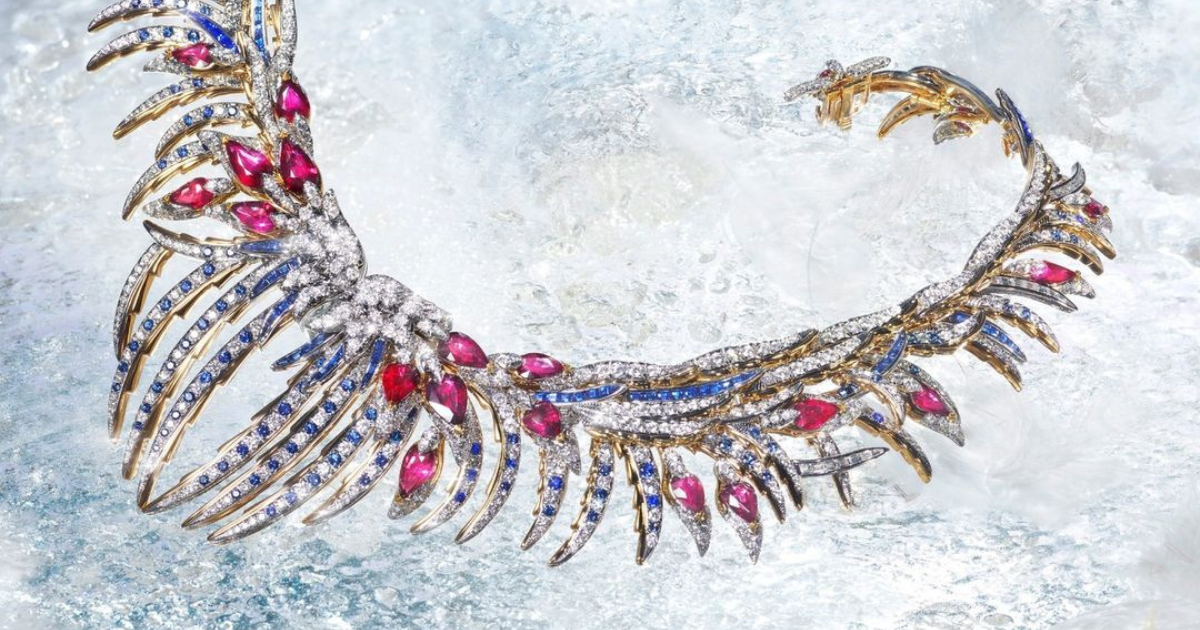Tiffany & Co.: The empire of diamonds
Times may change, but Tiffany & Co. pieces remain symbols of sophistication, luxury, and impeccable taste

Tiffany & Co. is one of the most popular and recognizable brands in the jewelry industry. However, in 1837, when a young Charles Tiffany borrowed $1 from his father to open a stationery store in downtown New York, jewelry wasn’t yet on the agenda.
The future "King of Diamonds"—as the press later dubbed him—was born in 1812 in the state of Connecticut. His father was a successful cotton mill operator at the time. When Charles came of age, he worked as a clerk in a small store and at his father’s office. Once the young man realized he was ready to start his own business, he and a classmate headed to New York—the city of big opportunities.
Unfortunately, the young entrepreneurs didn’t find immediate success. In the store’s first month, they earned just $4.98. Yet, rather than give up, Young and Tiffany began to rethink their service. Noticing where demand was highest, the store shifted its focus to jewelry and luxury goods.
In 1841, their longtime friend J.L. Ellis joined the business, and the company was renamed Tiffany, Young & Ellis. During the French Depression, the royal elite was desperate for money and began selling off their jewelry. Tiffany saw great potential in this and spent all the company’s earnings to acquire French diamonds, earning him the title "King of Diamonds" from the press.
In 1845, Tiffany & Co. published its first catalog, introducing buyers to luxury goods. The Blue Book annually showcases the most beautiful Tiffany jewels, and since 1978, the catalog covers have featured the signature Tiffany Blue color. The iconic white ribbon that wraps every Tiffany box has become a symbol of tenderness and sophistication.
When someone mentions Tiffany & Co., what often comes to mind is the famous turquoise color or the classic film “Breakfast at Tiffany’s”. However, few know that Tiffany began producing watches in 1847, and in 1868, they created America’s first stopwatch. In the early 2000s, the Tiffany Watch Co. was founded, entering into a partnership with the renowned watch brand Swatch. Together, they launched a new line of watches, all made in Switzerland.
In addition, Tiffany & Co. was the first company to craft jewelry from 925/1000 silver alloy, which later became the U.S. standard for sterling silver, still adhered to today.
In 1853, Charles Tiffany’s partners retired, giving him full control of the company, which he renamed Tiffany & Co.
During the Civil War, the company didn’t lose its success—in fact, it established itself as a reliable partner by supplying the military with swords, sabers, and ammunition. This was not only a patriotic gesture but also a profitable marketing move.
The company also excelled in the sports arena. Since the 1960s, Tiffany has produced sports trophies, including the Super Bowl trophy for the NFL. Additionally, Tiffany & Co. created the silver cup for the U.S. Tennis Championships, the NBA Championship trophy, and the silver platter awarded to the winner of the New York Marathon.
Charles Tiffany set out to capture the hearts of women everywhere and created the famous Tiffany Setting engagement ring. This ring featured a diamond elevated above the band, held in place by six prongs, creating the illusion that it was floating. For over 130 years, this ring has been popular worldwide, and men still present it to their beloved to symbolize their eternal love.
The brand’s fame grew with the release of the film “Breakfast at Tiffany’s”, based on Truman Capote’s novella. Starring Audrey Hepburn, who was already a well-known actress at the time, the film featured her character wearing a black dress, a tiara, and a necklace showcasing the Tiffany Diamond—one of the largest yellow diamonds in the world, weighing 128.51 carats. Tiffany would go on to make numerous appearances in cinema, including designing an entire collection of jewelry for “The Great Gatsby”, sparing no expense in terms of time or budget.
Tiffany & Co. reached new heights of success under Walter Hoving, who became the company's CEO and largest shareholder. In 2019, the deal of the century took place when French conglomerate LVMH acquired Tiffany & Co., along with the 183 years of legacy that came with it.
The legacy of Tiffany & Co. encompasses a wealth of exquisite products, including jewelry, stationery, silverware, ceramics, accessories, and fragrances. The company manufactures its goods in the U.S. and the Dominican Republic, sourcing most of its gemstones from Botswana, Canada, Namibia, Russia, and South Africa. While times and fashion trends may change, Tiffany & Co. pieces, just as they did a century ago, remain symbols of sophistication, luxury, and impeccable taste.


